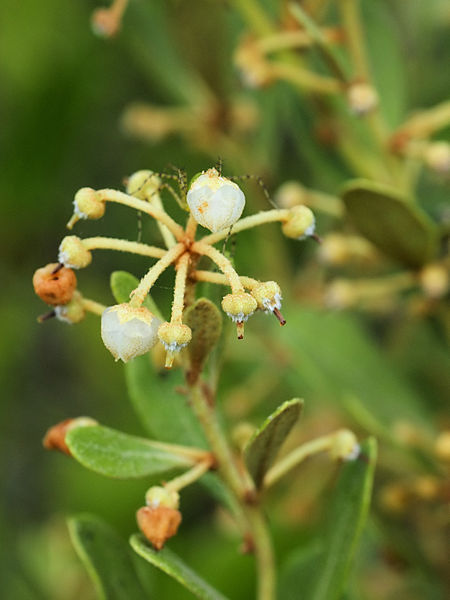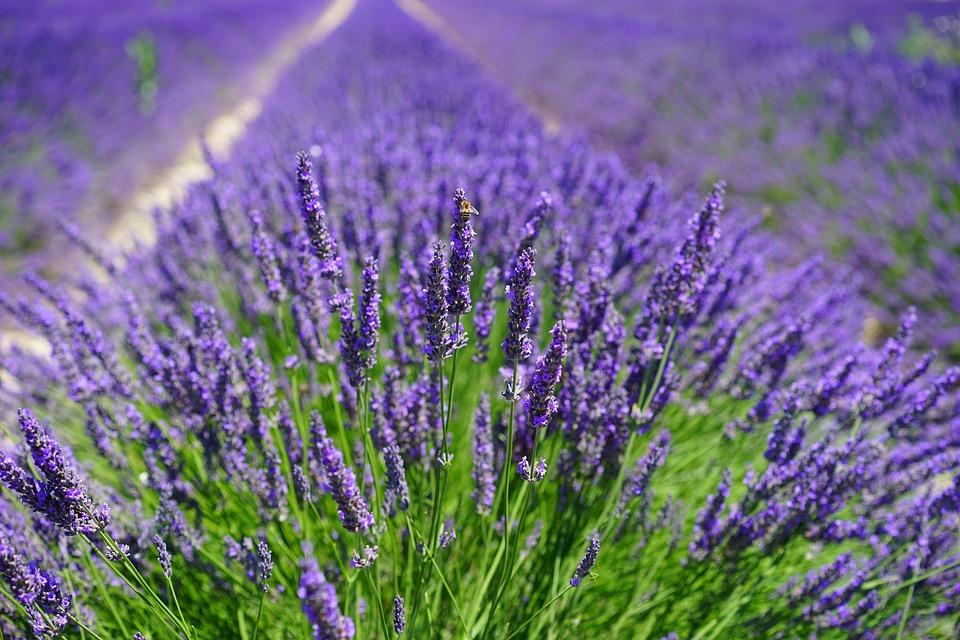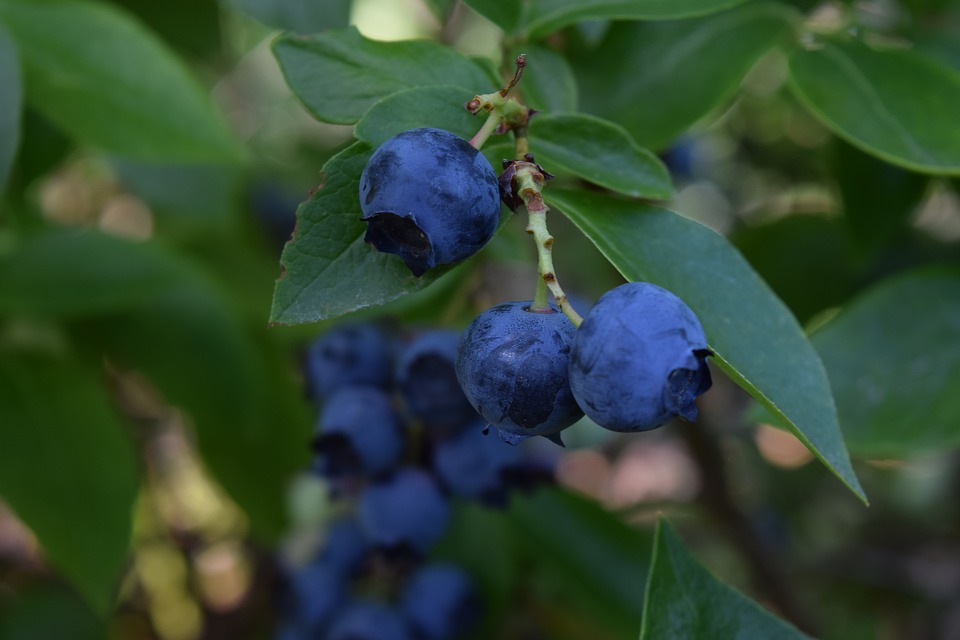Discover Florida Nature
It's time to explore the natural Florida


|
|
|
|
|
![By Th.Voekler [CC BY-SA 3.0 (https://creativecommons.org/licenses/by-sa/3.0)], from Wikimedia Commons](rouge%20plant.jpg) Rouge
Plant
(Rivina humilis L)- This native perennial or small shrub has small, pink
to sometimes white flowers in slender racemes. Rougeplant blooms here in
the summertime, and often present at the same time as the flowers are
the bright red berries. The berries contain a rouge-like red dye and are
eaten by birds. Rougeplant is poisonous, especially the leaves, and
although the berries are likely not highly toxic to humans, it is
probably safer to leave them to the birds. Since it is so attractive,
long-blooming, and easy to grow, our native Rougeplant is cultivated as
a garden plant, and it has become naturalized in a number of countries
around the World, including China. However, this plant is only native to
the tropical Americas and the southern parts of the United States.
Rougeplant has several common names and is also known as Pigeonberry,
Bloodberry, or Coralito Rouge
Plant
(Rivina humilis L)- This native perennial or small shrub has small, pink
to sometimes white flowers in slender racemes. Rougeplant blooms here in
the summertime, and often present at the same time as the flowers are
the bright red berries. The berries contain a rouge-like red dye and are
eaten by birds. Rougeplant is poisonous, especially the leaves, and
although the berries are likely not highly toxic to humans, it is
probably safer to leave them to the birds. Since it is so attractive,
long-blooming, and easy to grow, our native Rougeplant is cultivated as
a garden plant, and it has become naturalized in a number of countries
around the World, including China. However, this plant is only native to
the tropical Americas and the southern parts of the United States.
Rougeplant has several common names and is also known as Pigeonberry,
Bloodberry, or Coralito Rusty
Lyonia (Lyonia ferruginea.)- Rusty lyonia, also known as
stagger-bush or tree lyonia, grows on sandy sites, both dry and wet.
Rusty lyonia is found three states in the southeast: Florida, Georgia,
and South Carolina. It is almost always present in Florida scrub and may
be the dominant plant in some scrub ecosystems. The flowers of rusty
lyonia are an important nectar source and the leaves are eaten by deer.
Rusty lyonia is sometimes harvested for its twisted trunks and stems
that are used for canes and in decorative arrangements and displays. The
plant stems are often used to make artificial shrubs with plastic
leaves. Rusty lyonia can be identified by its crooked branches, fissured
bark, rusty scales on the undersurface of leaves and along new stems,
and small, ovoid capsules. White flowers occur in clusters at the end of
stalks. Rusty
Lyonia (Lyonia ferruginea.)- Rusty lyonia, also known as
stagger-bush or tree lyonia, grows on sandy sites, both dry and wet.
Rusty lyonia is found three states in the southeast: Florida, Georgia,
and South Carolina. It is almost always present in Florida scrub and may
be the dominant plant in some scrub ecosystems. The flowers of rusty
lyonia are an important nectar source and the leaves are eaten by deer.
Rusty lyonia is sometimes harvested for its twisted trunks and stems
that are used for canes and in decorative arrangements and displays. The
plant stems are often used to make artificial shrubs with plastic
leaves. Rusty lyonia can be identified by its crooked branches, fissured
bark, rusty scales on the undersurface of leaves and along new stems,
and small, ovoid capsules. White flowers occur in clusters at the end of
stalks.  Sea
Lavender (Argusia gnaphalodes)- There are many annuals in the
sea lavender genus, flowers that are dried and used in winter bouquets.
But one perennial, Limonium latifolium, is especially effective
for its branching sprays of tiny flowers that resemble baby's breath in
character. The genus name is from the Greek word for "meadow" and refers
to the frequent occurrence of some species in salt meadows. Sea lavender
has large, leathery leaves up to 10 inches long that form a basal
rosette, which, in late July and August, sends up 2-foot stems that
branch out into huge clouds of tiny 1/8-inch lavender-blue flowers! Sea
Lavender (Argusia gnaphalodes)- There are many annuals in the
sea lavender genus, flowers that are dried and used in winter bouquets.
But one perennial, Limonium latifolium, is especially effective
for its branching sprays of tiny flowers that resemble baby's breath in
character. The genus name is from the Greek word for "meadow" and refers
to the frequent occurrence of some species in salt meadows. Sea lavender
has large, leathery leaves up to 10 inches long that form a basal
rosette, which, in late July and August, sends up 2-foot stems that
branch out into huge clouds of tiny 1/8-inch lavender-blue flowers! Seagrape
(Coccoloba uvifera L)- Sea Grape has large, thick, round evergreen
leaves. Young leaves are red and then turn to a nice shiny green. The
Seagrape's wood is interesting and very nicely colored, varying with the
amount of sun and salt exposure. Seagrape is salt tolerant and can be
happy very close to the ocean if not overly exposed to strong winds. It
wants full sun and its favorite soil is plain beach sand. Better soil,
however, is appreciated as long as it is well drained. Seagrape
(Coccoloba uvifera L)- Sea Grape has large, thick, round evergreen
leaves. Young leaves are red and then turn to a nice shiny green. The
Seagrape's wood is interesting and very nicely colored, varying with the
amount of sun and salt exposure. Seagrape is salt tolerant and can be
happy very close to the ocean if not overly exposed to strong winds. It
wants full sun and its favorite soil is plain beach sand. Better soil,
however, is appreciated as long as it is well drained.  Shiny
Blueberry (Vaccinium myrsinites)- Shiny blueberry is a
knee-high shrub that has glossy little leaves all year long, pinkish
white urn-shaped flowers in spring, and shiny blue-black berries that
ripen in summer. The closely related glaucous blueberry is very
similar, and can be found growing in the same places, but its leaves,
berries and flower stalks are usually covered with a powdery bloom that
can be wiped off with the finger. Shiny blueberry are common components
of piney woods habitats, from seasonally wet to extremely dry, on the
southeastern Coastal Plain from South Carolina through the Florida
peninsula and west along the Gulf Coast. Blueberries, typical members of
the heath family, like a sandy, acidic soil. Shiny
Blueberry (Vaccinium myrsinites)- Shiny blueberry is a
knee-high shrub that has glossy little leaves all year long, pinkish
white urn-shaped flowers in spring, and shiny blue-black berries that
ripen in summer. The closely related glaucous blueberry is very
similar, and can be found growing in the same places, but its leaves,
berries and flower stalks are usually covered with a powdery bloom that
can be wiped off with the finger. Shiny blueberry are common components
of piney woods habitats, from seasonally wet to extremely dry, on the
southeastern Coastal Plain from South Carolina through the Florida
peninsula and west along the Gulf Coast. Blueberries, typical members of
the heath family, like a sandy, acidic soil.![By George Chernilevsky [Public domain], from Wikimedia Commons](southern%20dewberry2.jpg) Southern
Dewberry (Rubus trivialis.)-Southern dewberry is a trailing,
low arching, prickle-laden plant that will shred anyone bold or foolish
enough to walk through it. It grows in open, disturbed areas along fence
lines, roadsides, railroad rights-of-way, and in natural clearings along
the coast of Texas, but it is more abundant along the Coastal Bend and
upper coast. Dewberry flowers in early spring and provides a tasty black
fruit consisting of a cluster of drupelets about half the size of your
thumb. Southern dewberry grows throughout southeastern North America up
the eastern coast to Maryland. Southern
Dewberry (Rubus trivialis.)-Southern dewberry is a trailing,
low arching, prickle-laden plant that will shred anyone bold or foolish
enough to walk through it. It grows in open, disturbed areas along fence
lines, roadsides, railroad rights-of-way, and in natural clearings along
the coast of Texas, but it is more abundant along the Coastal Bend and
upper coast. Dewberry flowers in early spring and provides a tasty black
fruit consisting of a cluster of drupelets about half the size of your
thumb. Southern dewberry grows throughout southeastern North America up
the eastern coast to Maryland.  Spanish
Bayonet (Yucca aloifolia)- The Spanish Bayonet plant is native
to the United States and occurs naturally northward to North Carolina.
Spanish Bayonet Yucca do well in dry soils and are very tolerant of salt
water and is planted ornamentally in backgrounds away from children and
pets. The Spanish Bayonet plant can grow 20 ft. tall, but often it will
fall over, but new plants will arise all along the stalk to form large
colonies. The white blooms atop the Spanish Bayonet plants are quite
spectacular and last for a long time. Plant a Spanish Bayonet underneath
a window and you'll never be visited by a burglar. Yucca-The Spanish
Bayonet plant can grow into colorful clusters of ornamental plants at
shopping malls. Spanish
Bayonet (Yucca aloifolia)- The Spanish Bayonet plant is native
to the United States and occurs naturally northward to North Carolina.
Spanish Bayonet Yucca do well in dry soils and are very tolerant of salt
water and is planted ornamentally in backgrounds away from children and
pets. The Spanish Bayonet plant can grow 20 ft. tall, but often it will
fall over, but new plants will arise all along the stalk to form large
colonies. The white blooms atop the Spanish Bayonet plants are quite
spectacular and last for a long time. Plant a Spanish Bayonet underneath
a window and you'll never be visited by a burglar. Yucca-The Spanish
Bayonet plant can grow into colorful clusters of ornamental plants at
shopping malls.
|
|
|
Advertise | Privacy Statement | Dog Encyclopedia | Video |Contact | Alaska Nature |
|